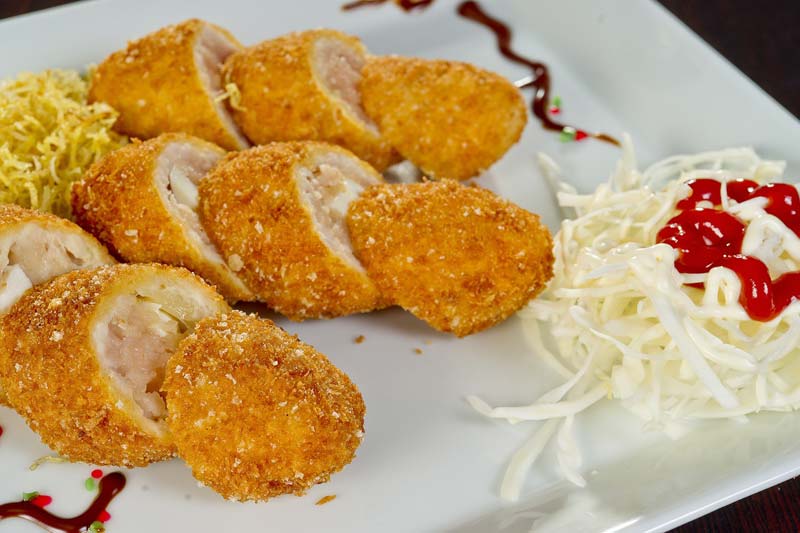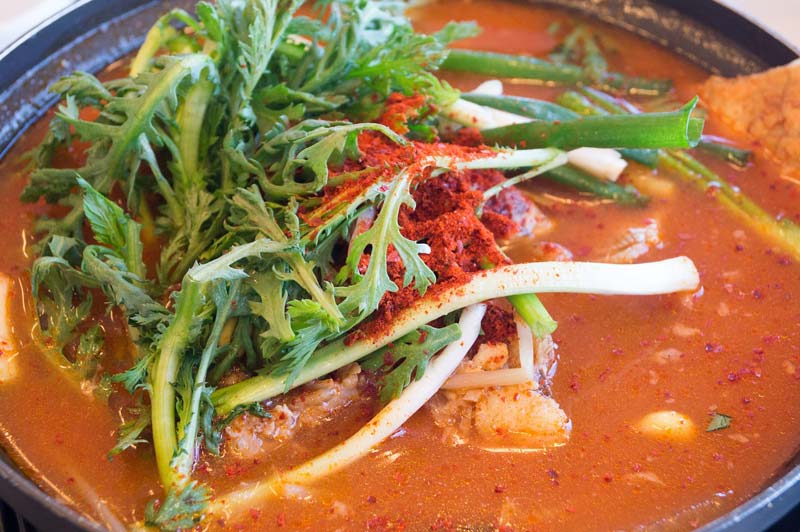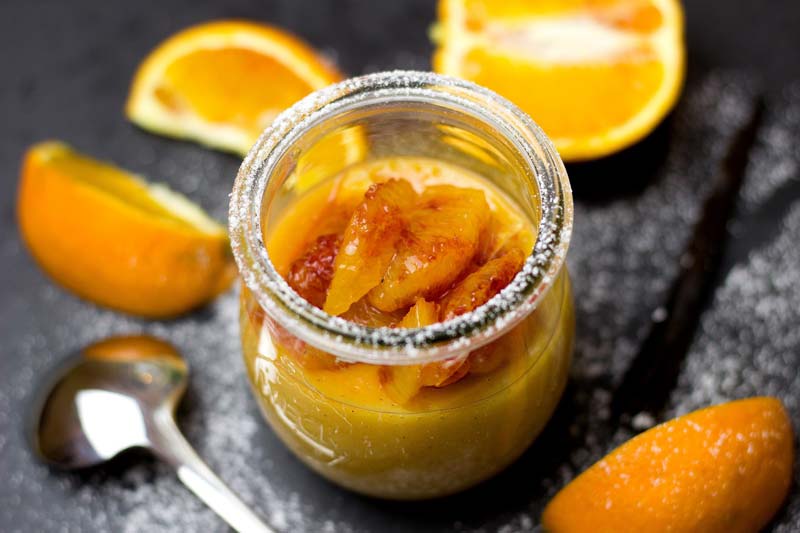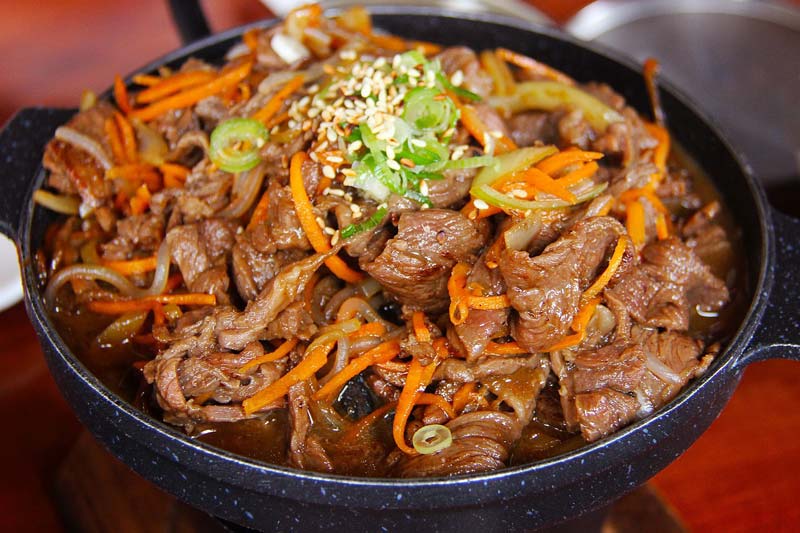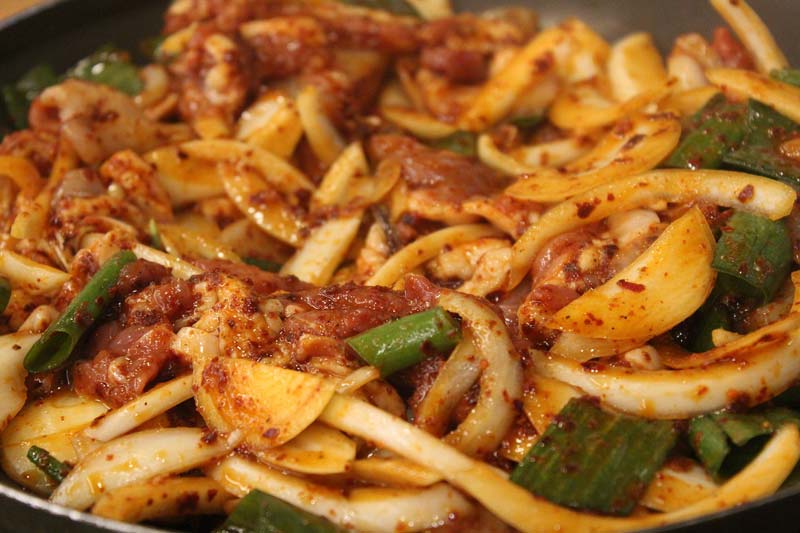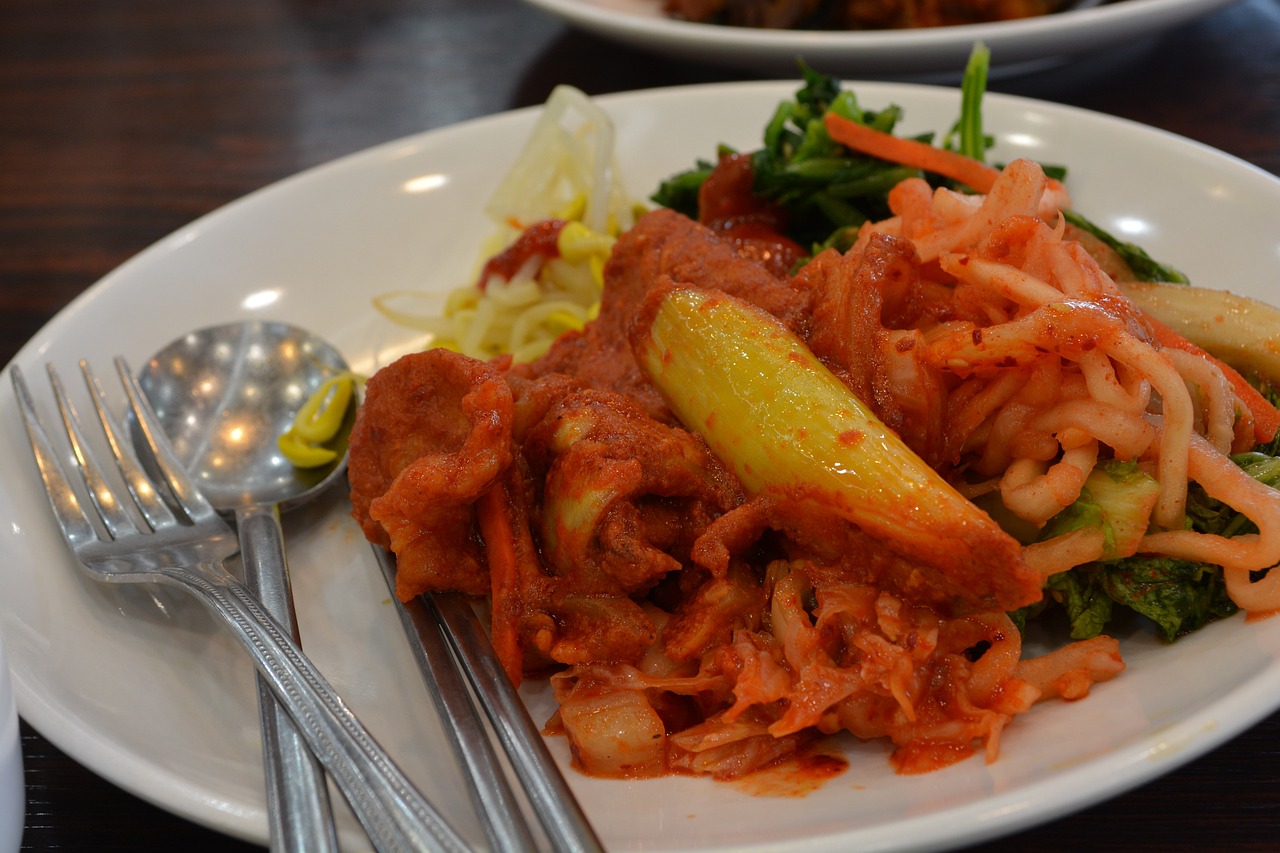Korean foods are largely categorized into main meal, side dish and dessert. Rice, porridge and noodle are normally taken as main meal, while side dishes include soup, stew, fried food, steamed dish, Seon, raw vegetable, wild greens, hard-boiled food, Cho, fried fish, roasted meat, Jeok, raw fish, Ssam, sliced boiled meat, Jokpyeon, fried kelp, jerky, slices of dried radish or cucumber, kimchi and salted fish. Dessert includes rice cake, cookie and pastry as well as tea, juice and punch.
Main meals (tabbed)
Bap (Cooked rice)
Boiled white rice has long been the staple food for the Koreans. We also eat mixed grains meal cooked with such ingredients as barley, millet, Indian millet, bean and red-bean. The cooking method of rice is to mix it with other grains and water, boil them and allow sufficient time for settling by its own heat. Sometimes vegetables, fish, clam and meat are put into rice cooking to produce special meal. Bibimbap is a food made with wild greens and meat laid above rice, and taken after all the contents are mixed together.
Rice-gruel
Porridge, thin gruel, mild broth
These are liquid foods made of grains. Porridge is cooked by boiling grains, mainly rice, in their original form or after being ground. Thin gruel differs from porridge in that grains are boiled long in their original shape and then sieved. ‘EungEe’ is a mild broth which is prepared by dissolving starch of grains into water and then boiling. The broth is so mild that it can be even drunk up. Vegetables, meat, fish or clam are sometimes added in cooking porridge. Nuts can be also put into boiling grains to produce porridge with better taste and nutrition, such as pine nuts porridge, sesame, walnut and mung-bean porridge. Examples of vegetable mixed porridge are pumpkin porridge, pyogo mushroom porridge and curled mallow porridge. In addition, porridge can be cooked with seafood such as fish, ear shell, clam, and also with such meat as beef and chicken.
Dumpling, rice-cake soup
There are a variety of dumpling according to ingredients of cover and stuffing. Dumpling cover is normally made with flour kneaded and pressed. Sometimes buckwheat flour is used to give s special flavor. In royal court, dumplings were cooked as shaped into crescent or sea cucumber form. Stuffing of dumpling was generally consisted of pumpkin, vegetable and meat. In the northern area of Korea such as Pyeongan province, stuffing was made with Chinese cabbage, pork and bean curd. The ingredients were packed roundly and put into broth to be boiled.
Korea has long enjoyed rice cake soup on New Year’s Day, serving the food to ancestor worship and enjoying it as the first breakfast. Rice cake soup is made by boiling in broth the small rice cake in proper quantity. The rice cakes are produced by pressing non-glutinous rice grains into a machine, and they are kept at each house ready to be used in cooking the rice cake soup. In the northern area dumplings were more favored while in the south cake soup was the preferred one.
Noodles
Noodles are served more often on special occasions like a banquet or treating guests than as a regular meal. On normal days, noodle is served as a light lunch.
Noodles include, according to ingredients of grain or starch, wheat noodle, buckwheat noodle, starch noodle and arrowroot noodle. As a meal, noodle is divided into warm noodle (cooked in warm water), cold noodle (prepared in cold broth or watery kimchi) and bibim noodle (non-liquid type). In cooking warm noodle, sometimes pheasant meat was used in old days but nowadays brisket or leg bones of cow are used mostly. In cooking knife-cut noodle, chicken broth is mainly used. Cold noodle is prepared by mixing flour or starch with powdered buckwheat flour, then kneading and pressing them in noodle machinery, to be produced as thin noodles. Knife-cut noodle is made by kneading flour or buckwheat flour, pressing and cutting them into thin noodles by a special knife. In the summer, bean noodles made by mixing wheat noodles in bean soup have been enjoyed by the Koreans.
Side dishes (tabbed)
Soup, stew
In Korea where rice is the main staple, soup is a basic side dish indispensable to daily meals. Clean soy soup, bean paste soup, thick beef soup and cold soup are the most popular ones. Soups can be cooked with nearly all ingredients available, such as meat, fish, clam, vegetable and aquatic plants. In particular, brisket and shank of beef, rib, tail, leg bones of cattle, their internals such as tripe and intestines, and even their clotted blood are used as ingredients of soup. Clean soy soup is seasoned with salt or soybean sauce, while bean paste soup uses soybean paste and hot pepper paste. ‘Gomtang’ and ‘seolleongtang’ (ox-bone stews that are cooked through boiling for a long time) are seasoned with salt or soybean sauce. In the hot summer, cold soup made with cucumber, seaweed, kelp, vegetable gelatin, etc is often enjoyed.
Stew
Stew is liquid food in which solids and liquid are contained in similar proportion. It is cooked with stronger seasoning compared with soup. Stew is largely divided into soybean paste stew, hot pepper paste stew and clear stew according to ingredients. Foods similar to stew are ‘Jijimi,’ ‘Jochi,’ and ‘Gamjeong.’ In the royal court of early Joseon dynasty, stew was called Jochi and hot pepper paste stew was named Gamjeong. Soybean paste stew tastes better when cooked in rice water than in simple water. In particular, soybean paste stew is an indigenous food most favored by the Koreans, and taste of the food varies upon soybean paste used. Bean curd, young hot pepper, pumpkin, beef and anchovy are used as solids of the stew. Hot pepper paste stew is cooked with bean curd and vegetables as solids. Similar to the pepper stew is ‘Maeuntang’ (fish stew) which is cooked with fish and a lot of vegetables. Clean stew is normally seasoned with salt or salted shrimps and added with bean curd, pumpkin, radish or clamp. The stew gives bland taste and is enjoyed in the central region of Korea.
Jeongol (hot pot) and Bokkeum (stir-fried food)
‘Jeongol’ is a food taken while meat and vegetables (prepared on a dish in advance) are boiling at utensils such as brazier set on table. ‘Bokkeum’ is a food using similar materials but cooked in advance by stir-frying and served on a dish. In cooking Jeongol, such pots as ‘Beonggeojitgol’ (made of iron and shaped like upside-down helmet) and ‘Jeongol frame’ (made of low and even stone) are used. The center of Beonggeojitgol is lowered so that gravy can gather there, and its edge is wide so that diverse food materials can be laid there to be roasted and eaten on-site.
Jjim (steamed dish) and Seon
‘Jjim’ or steamed dish is a food cooked with meat, fish, clams and vegetables by steam heating or boiling in water. The dish prepared in boiling water mainly uses rib, tail, shank of beef and pork rib as ingredients. They are cooked at weak fire for a long time. Steam heating is mainly used for dishes of fish, shrimp and clams.
‘Seon’ uses bean curd, vegetable and fish as main ingredients, and cook them also by steaming or boiling. Vegetables such as pumpkin, cucumber, eggplant or Chinese cabbage are put in soy soup to be boiled for a short time or steam-heated. ‘Fish Seon’ is a dish served with white meat of fish while ‘Bean Curd Seon’ is served with mashed bean curds that are cooked in a steamer together with chicken or beef.
Saengchae (raw vegetables)
Raw vegetable is a side dish that can be made easily without heat-cooking. Fresh vegetables available seasonally are hand-mixed with vinegared soy sauce, vinegared red pepper paste or mustard soy sauce, to be served as raw vegetable dish. Added with sugar and vinegar, they generate sweet, sour and crisp taste. In preparing the food are used a variety of edible plants such as radish, Chinese cabbage, lettuce, cucumber, dropwort, ‘Deodeok’ (lanceolate root) and other wild greens. Sometimes aquatic plants like seaweed, green laver and jellyfish as well as cuttlefish, clam and shrimp are seasoned and mixed on the dish. Vegetable with mustard seasoning and cold vegetable are also included in raw vegetables dish.
Namul (cooked vegetables)
Namul is one of the most common side dishes in Korea. Namul originally meant both raw and cooked vegetables but nowadays it refers to cooked vegetable only. Nearly all kinds of vegetable are used as ingredients of Namul. Vegetables with green leaves are first boiled and then seasoned with various condiments. Such wild greens as bracken, osmund and balloonflower are boiled, seasoned and then stir-fried. Dried aster, pepper leaves and dried radish leaves are soaked in water before being boiled and fried. Namul becomes softened and tasty if sesame oil and sesame salt are added profusely. If seasoned with vinegared red pepper paste, Namul will taste sour. Besides vegetable, jelly dishes such as green-lentil jelly, buckwheat jelly and acorn-starch jelly are also popular. They are made by pouring starches on a vessel and solidifying them. Mixed with fermented vegetable and meat, the jelly foods are seasoned with spices and condiments before being served. Green-lentil jelly was called ‘Tangpyeongchae’ in Joseon dynasty, meaning that various vegetables are mixed fairly. ‘Japchae’ and ‘Juksunchae’ are also favored food in which various vegetables are fried and mixed together.
Jorim (hard-boiled food) and Cho
Jorim is made with meat, fish, clam and vegetables seasoned strongly with condiments. It is a side dish normally taken as a complement to rice. Hard-boiled meat is called ‘Jangjorim,’ which is stored long and served little by little. White meat of fish is mostly boiled with soy sauce, while fish with red meat or fishy smell is better cooked with red pepper powders or paste.
‘Cho’ originally meant stir-frying, but nowadays it refers to the food prepared by boiling seafood with starch till they are clotted. It is normally seasoned sweetly and not strongly. Sea mussel and ear shell are mainly used as ingredients of Cho.
JeonyuEo (fried fish)
‘Jeon’ is a cooking method, i.e. to coat food material with oil and fry them. Fish fried with oil is called JeonyuEo, JeonyuA, JeonYa or simply Jeon, and in royal court it was called JeonyuHwa. Fried fish presented to ancestor worship table was called by various names such as Gannam, Gannap or Galrap.
Meat, clam and vegetables are also used to make Jeon. They are cut into proper size, seasoned with salt and black pepper, and then coated with flour and egg to be fried on a pan. Normally more than 3 materials are fried and served on a dish. Buckwheat powder or moistened flour can be used for coating instead of egg. ‘Jijim’ is a food cooked by mixing materials into thin dough and frying them with oil. Bindaedeok (green-bean pancake) and Pajeon (stone-leek pancake) are the most famous examples of Jijim. In frying Pajeon, green onions and seafood are profusely inputted. As another example, Nokdu bindaedeok (mung-bean pancake) is cooked by grinding and frying mung beans, while Kong buchim (bean pancake) is cooked by soaking beans in water and frying them.
GuEe (roast meat) and Jeok (kebab)
‘GuEe’ might be the earliest food cooked by mankind since fire had been used. Boiling or frying had not begun until vessels were invented, however, roasting or broiling could be done just by exposing materials at fire, with no need of utensils. Records show that since ancient times Koreans had roasted meat. Bulgogi (roast meat) is one of the most representative dishes of Korea. But its name has not been used until lately. In the old days, meat thinly minced and roasted was called ‘Neobiani’ and meat broiled with salt was called ‘Bangjaguee.’
‘Jeok’ is a food cooked with meat, vegetable, mushroom, etc. which are seasoned, pierced through bamboo skewers and grilled. ‘Sanjeok’ is made by roasting or frying raw meat on skewers. ‘Nureumjeok’ is cooked in two ways, i.e. food materials are seasoned, roasted and then threaded into skewers, or materials are first skewered and then coated to be fried.
Hoe (raw fish) and Ssam (rice wrapped in lettuce or seaweed)
‘Hoe’ is a dish of fish or meat to be eaten raw after dipping in vinegared soy sauce, vinegared hot pepper paste, mustard juice or salted oil. In preparing raw meat are used tender beef, tripe and wall of stomach, and liver of ox. Fresh fish such as flatfish and pomfret as well as clam, oyster and sea cucumber are popular ingredients of Hoe. ‘Eochae’ is a kind of heated raw fish, which is made by putting white meat of seafood such as squid, octopus, small octopus and shrimp into boiling water for a short time before serving on a dish. Vegetables such as parsley, small green onion and aralia shoots are also cooked as Eochae.
Rice wrapped in leaves of lettuce, Chinese cabbage, wild aster, pumpkin, sesame and brown seaweed as well as in dried laver is called ‘Ssam.’ The Koreans are very fond of eating bulgogi or raw fish by Ssam.
Pyeonyuk (slices of boiled meat) and Jokpyeon (calf’s-hoof jelly)
‘Pyeon-yuk’ is lumps of beef or pork that are boiled, wrapped in cloth and pressed with chopping board, and then shredded thinly. The food is dipped into seasoning sauce or pickled shrimps sauce before eating. Beef Pyeonyuk mainly uses brisket and shank of beef, ox tongue and head, while pork Pyeonyuk uses three-ply meat, shoulder and head part. Pork Pyeonyuk can be enjoyed better with pickled shrimp sauce and wrapped in kimchi.
‘Jokpyeon’ is made by boiling tough meat such as hoof, shank, tendon and skin of cow for a long time. Through the boiling, their gelatins become melted down like porridge, which are then poured into square vessel, solidified and cut into thin slices. The slices of jokpyeon are eaten after dipping in seasoning sauce.
Twigak and Bugak (fried kelp)
‘Twigak’ is a food made with kelp, sprout of ailanthus, walnut, etc. by fully stir-frying them on oil. ‘Bugak’ is made with potato, red pepper, sesame leaf, laver, ailanthus leaf, etc. by just drying them or by frying them after they have been coated with glutinous rice and dried.
Po (jerky)
Meat jerky is chiefly made of beef by seasoning with soy sauce and drying. Fish jerky is made by drying whole fish or tearing off meat from fish, seasoning them with salt and drying them. Pollack jerky is normally dried without seasoning. In particular, meat jerky is made by spreading beef jowl, etc. thinly and widely, then mixing with soy sauce, sugar or pepper powder, and drying them. ‘Pyeonpo’ is made by mincing meat, seasoning and shaping them into big lumps before drying. Also used as side dish at drinking party are ‘Daechupo’ which is made with minced meat by shaping them into jujube and ‘Chilbo Pyeonpo’ which is made by forming minced meat flat and round, inserting pine nuts and drying. ‘Possam’ which is made with pine nuts in it and shaped like a small dumpling, is also available. As for fish jerky, codfish or other fish is cut into pieces which are then seasoned with salt and dried. They are enjoyed as dry food or put into stew. The Alaska Pollack is dried while being frozen in the winter. The dried pollack is used as ingredient of various side dishes. Also available is squid which is cut into pieces and dried to become jerky.
JangAchi (slices of dried radish or cucumber)
‘JangAchi,’ also called ‘Janggwa,’ is a side dish made with vegetables preserved in soy sauce, hot pepper paste or soybean paste. In the old days, they were made in harvest season and, after long preservation, were eaten little by little when vegetable is rare. JangAchi is cut into thin slices, seasoned with sesame oil, sugar and sesame salt before being served on a dish. To make a good JangAchi, vegetable should be dried or salted, thereby reducing their moist, before preservation. Ingredients used mainly for JangAchi are garlic, stalk of garlic, sesame leaf, radish, cucumber and deodeok. ‘Gapjanggwa’ or ‘Sukjanggwa is a food made by cutting radish or cucumber into small pieces, and then drying, seasoning and stir-frying.
Kimchi
Kimchi is fermented food that mixes salted cabbage with seasonings such as chilly powder, garlic, ginger, radish, etc. It is the most basic side dish in Korea. In its preserving and fermenting process, lactic acid is generated, creating unique sour taste which, mixed with hot taste of red pepper, stimulates appetite and improves digestion. Adding pickled fish, clam, etc. to the vegetables in making kimchi will help achieve better taste and nutrition (protein). ‘Gimjang kimchi’ that has been made regularly in the winter is preserved long, however, kimchi made nowadays with vegetables available seasonally needs not to be preserved so long.
Pickled fish
It is a kind of preserved food, made with salted fish and clam. Unique flavor and taste are produced while protein contents of fish are being dissolved during storage. Of the food, pickled shrimp and anchovy are mainly used as subsidiary materials to making kimchi, and salted pollack roe, squid, oyster and clam can be eaten as side dish. ‘Sikhae’ is a traditional food made by preserving and fermenting fish, after mixing with malt and grains and then seasoning with hot pepper powder, stone-leek, garlic and salt. Flatfish sikhae, frozen pollack sikhae and sandfish sikhae are favored examples of the food.
(tradition/tradition4_1.jsp)
